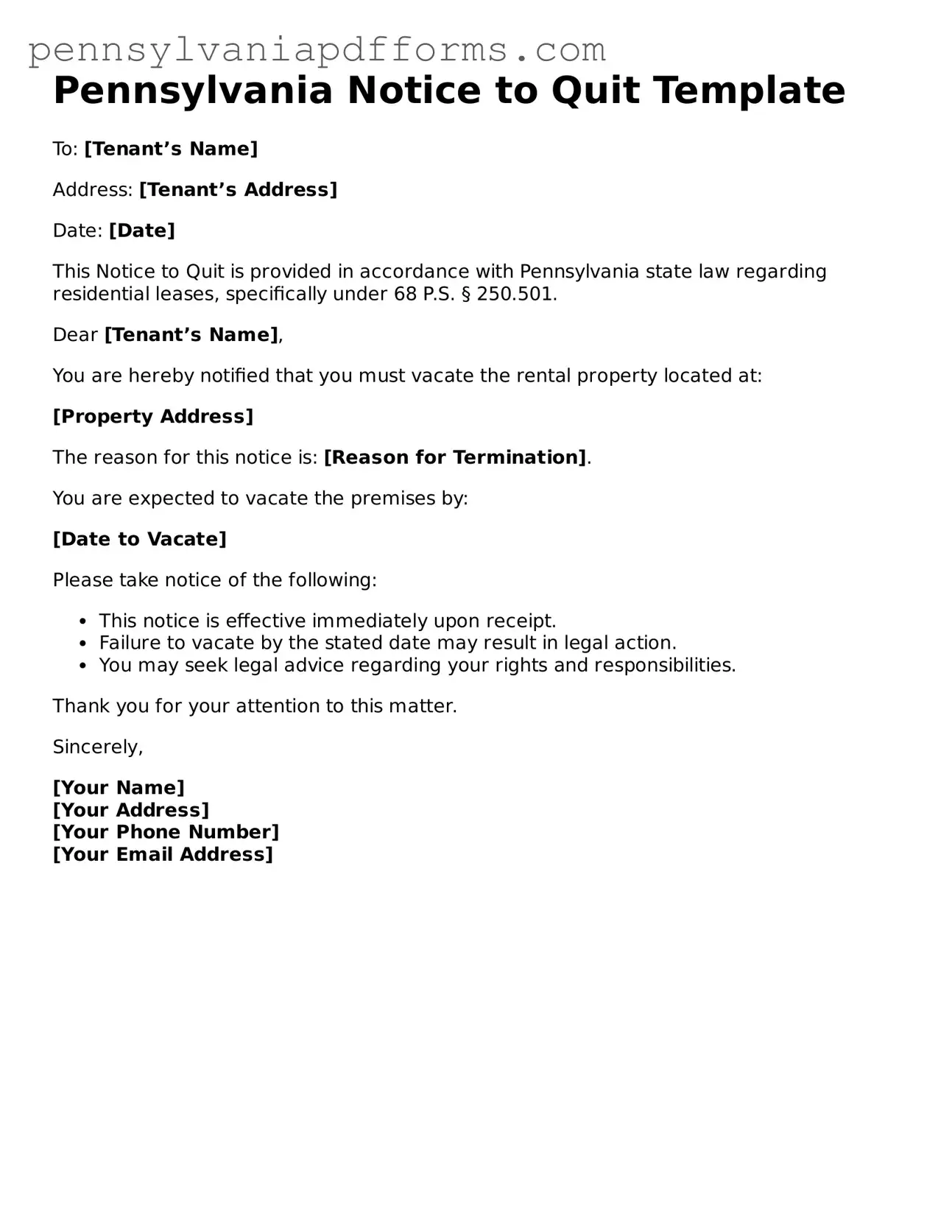Fillable Notice to Quit Document for Pennsylvania State
The Pennsylvania Notice to Quit form is a legal document that landlords use to inform tenants of their intent to terminate a lease. This form outlines the reasons for eviction and provides a timeline for the tenant to vacate the property. Understanding how to properly fill out and serve this notice is crucial for both landlords and tenants.
If you need to complete this form, please click the button below to get started.
Access Editor Now
